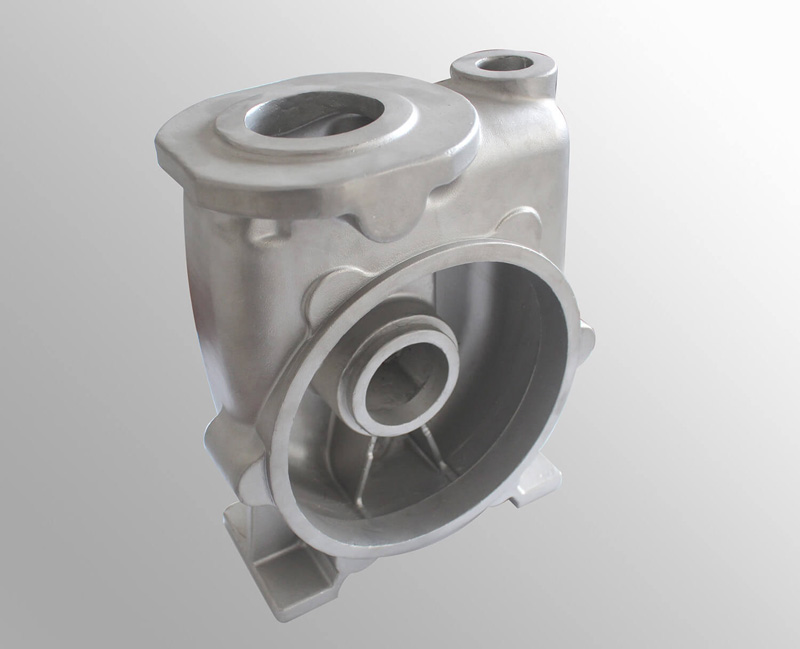Effective Role of Investment Casting
Investment casting is a precision casting method that produces high-quality parts with excellent dimensional accuracy and surface finish. Despite its advantages, investment casting can encounter deformation problems during the solidification process, leading to casting defects and reduced precision. However, with the help of simulation and optimization techniques, investment casting can effectively reduce the occurrence of deformation problems and improve the quality of the final product.
Investment casting involves the use of wax patterns, ceramic molds, and metal alloys to create complex shapes with tight tolerances. During the casting process, the metal is poured into the mold, solidifies, and then the mold is removed to reveal the final part. However, the solidification process can cause deformation due to thermal stresses, uneven cooling, and other factors. To address this issue, investment casting can utilize simulation software to predict and optimize the casting process, reducing the likelihood of deformation and improving the precision of the final product.
By optimizing the investment casting process, manufacturers can achieve greater dimensional accuracy and surface finish while reducing the occurrence of casting defects such as warping, shrinkage, and porosity. With the help of advanced simulation techniques, investment casting can become an even more effective method for producing high-quality parts with complex shapes and tight tolerances.

Investment Casting Process
Investment casting is a metal casting process that is also known as lost-wax casting. This process is used to create parts with intricate shapes and high dimensional accuracy. The investment casting process involves the following sub-processes: wax pattern production, ceramic mold making, and casting process.
Wax Pattern Production
In the first step of investment casting, a wax pattern is produced. The wax pattern is an exact replica of the part that is to be cast. The wax pattern is produced by injecting molten wax into a metal mold. The mold is designed to have the same shape and dimensions as the final part. The wax pattern is then removed from the mold and assembled with other wax patterns to create a cluster.
Ceramic Mold Making
Once the wax pattern cluster is assembled, it is coated with a ceramic shell. The ceramic shell is created by dipping the wax pattern cluster into a ceramic slurry. The ceramic slurry is made up of fine ceramic particles suspended in a liquid. After the first coat of ceramic slurry is applied, the wax pattern cluster is allowed to dry. This process is repeated multiple times until a thick ceramic shell is formed around the wax pattern cluster.
Casting Process
The ceramic shell is then heated to a high temperature to melt and remove the wax pattern from the ceramic shell. The resulting cavity is then filled with molten metal. The molten metal is poured into the ceramic shell through a sprue. The sprue is a channel that connects the ceramic shell to the outside of the mold. The pouring temperature of the metal is carefully controlled to ensure that the metal fills the mold completely and does not solidify before it reaches all parts of the mold.
After the metal has solidified, the ceramic shell is broken away from the metal casting. The casting is then cleaned and finished to remove any excess material and improve its surface finish.
In conclusion, investment casting is a highly accurate and precise metal casting process that is used to create parts with complex shapes. The process involves the production of a wax pattern, the creation of a ceramic mold, and the casting of molten metal into the mold. The process is carefully controlled to ensure that the metal fills the mold completely and does not solidify before it reaches all parts of the mold.
Solidification and Cooling
Investment casting is a process that involves solidification and cooling of molten metal. The solidification and cooling process is critical in ensuring that the final product has the desired shape, dimensions, and mechanical properties. In this section, we will discuss the two types of solidification and cooling methods used in investment casting: directional solidification and equiaxed cooling.
Directional Solidification
Directional solidification is a solidification process that involves the gradual solidification of molten metal from one end of the mold to the other. This process is achieved by using cooling ribs or cooling coils to control the solidification time of the molten metal. The cooling ribs or cooling coils help to maintain a constant temperature gradient across the mold, which ensures that the molten metal solidifies uniformly.
Directional solidification is an effective method of reducing the occurrence of deformation problems in investment casting. The gradual solidification of molten metal from one end of the mold to the other helps to reduce the shrinkage and deformation of the final product. This is because the gradual solidification process reduces the thermal gradients across the mold, which helps to minimize the formation of internal stresses.
Equiaxed Cooling
Equiaxed cooling is a solidification process that involves the simultaneous solidification of molten metal in all directions. This process is achieved by using a cooling system that cools the molten metal uniformly from all sides.
Equiaxed cooling is an effective method of reducing the occurrence of deformation problems in investment casting. The uniform cooling of the molten metal helps to reduce the formation of thermal gradients across the mold, which helps to minimize the formation of internal stresses. Equiaxed cooling is particularly useful in the production of complex shapes and structures where directional solidification may not be feasible.
In conclusion, solidification and cooling are critical processes in investment casting. Directional solidification and equiaxed cooling are two effective methods of reducing the occurrence of deformation problems in investment casting. The choice of solidification and cooling method depends on the shape, size, and complexity of the final product.
Deformation Problems
Investment casting is a widely used manufacturing process for creating complex metal parts with high accuracy and surface finish. However, the solidification and cooling process of the molten metal can cause various deformation problems that affect the quality and functionality of the final product. In this section, we will discuss some of the common deformation problems in investment casting and how they can be effectively reduced.
Shrinkage Defects
Shrinkage defects are one of the most common deformation problems in investment casting. Shrinkage occurs when the molten metal cools and solidifies, causing a decrease in volume. This can result in voids, porosity, cracks, and fractures in the casting. To reduce shrinkage defects, it is important to design the casting with proper gating and risering systems that allow for uniform cooling and solidification. The use of ceramic cores and molds can also help to reduce shrinkage defects by providing internal support and preventing the collapse of thin sections.
Warping and Hot Spots
Warping and hot spots are another common deformation problem in investment casting. Warping occurs when the casting undergoes uneven cooling, resulting in a change in shape. Hot spots occur when certain areas of the casting experience rapid cooling, leading to residual stresses and distortion. To reduce warping and hot spots, it is important to design the casting with equiaxed cooling, which allows for uniform cooling and minimizes residual stresses. The use of bottom core vanes and displacement field analysis can also help to reduce warping and hot spots.
Flash and Surface Roughness
Flash and surface roughness are also common deformation problems in investment casting. Flash occurs when excess metal flows into the parting line of the mold, resulting in unwanted material on the surface of the casting. Surface roughness occurs when the surface of the casting is not smooth, resulting in a poor finish. To reduce flash and surface roughness, it is important to design the casting with proper gating and risering systems that allow for controlled metal flow. The use of genetic algorithms and ProCAST simulations can also help to optimize the casting process and reduce flash and surface roughness.
In summary, investment casting can experience various deformation problems that affect the quality and functionality of the final product. Shrinkage defects, warping and hot spots, and flash and surface roughness are some of the common deformation problems that can be effectively reduced by proper design and process optimization. By addressing these issues, investment casting can continue to be a reliable and cost-effective manufacturing process for creating complex metal parts for industries such as power generation, aerospace, and more.
